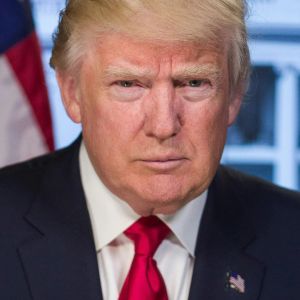
The United States and Vietnam have agreed on a two-layer tariff system designed to stop goods routed through Vietnam, often to dodge US duties, from entering American markets. Under the plan , items genuinely produced in Vietnam face a 20% duty, while those judged to be merely passing through will have a 40% levy. Analysts say the success of this approach will rest on how strictly “Made in Vietnam” is defined and enforced, reports Bloomberg . China uses Vietnam as a route into US markets The new framework follows years of Chinese firms shifting parts of their supply chains into Southeast Asia to avoid higher US tariffs. Much of Vietnam’s exports, such as earbuds, cellphones and other electronics, are assembled locally using imported Chinese components before shipping to the United States. It’s legal, but it makes it hard to tell which products really come from Vietnam. Roland Rajah, from Sydney’s Lowy Institute, cautions that the critical factor will be where Washington draws the line for the steeper duty. “A lot will depend on how the 40% tariffs are applied.” He continued, “If the approach is too broad and blunt, then it could be quite damaging”. Data from the Sydney think tank indicates that in 2022, almost 28% of Vietnam’s US-bound exports contained Chinese-made inputs, up sharply from roughly 9% in 2018. Meanwhile, Chief Economist Pham Luu Hung notes that in 2021, rerouted shipments represented about 16.5% of Vietnam’s exports to America. He believes that share has likely fallen more recently, as both countries have stepped up origin checks. “An important caveat is that the rules of origin remain under negotiation.” Hung adds, “In practice, these rules may have a greater impact than the tariff rates themselves.” Yet some analysts doubt the pact will fully block indirect Chinese exports . Duncan Wrigley at Pantheon Macroeconomics said, “The devil is in the details, but I think China’s exports will either go via other markets to the US, or some value-added will be done in Vietnam”. Southeast Asian authorities crack down on fake origin labels This year, trade between South Asia and China has surged. Vietnam, Indonesia, Thailand and Malaysia have all reported record inbound shipments from China. Citigroup economists point out a strong link between those rises and the volume of Southeast Asian exports bound for America. Across the region, authorities have moved to show they are cracking down. In April, South Korea’s customs seized over $20 million in goods mislabeled to hide their true origin, most were meant for the US market. In May, Malaysia’s Airfreight Forwarders Association warned that Chinese brokers were offering illegal rerouting schemes online. Malaysia has since centralized its origin certificate system under the Ministry of Investment, Trade and Industry, backed by customs enforcement. Thailand has added items like solar panels and auto parts to a high-risk roster and is weighing tougher penalties for offenders. Cambodian exporters are already being affected. Casey Barnett, president of the American Chamber of Commerce in Cambodia, says customs officials now meticulously inspect shipments headed for US retailers. This includes Walmart, Home Depot and Lowe’s. He notes that export paperwork has grown heavier and processing times have doubled to as long as two weeks. In comparison, Indonesia still issues origin certificates swiftly for marked exports based on a letter and a list of products to the local trade office. Soon after Trump put in place his April 2 “ Liberation Day ” tariffs, Chinese firms offered to help Indonesian clothing makers reroute their shipments, said Redma Gita Wirawasta, head of the Indonesian Filament Yarn and Fiber Producers Association. For now, both sides say they will finalize the rules soon. But because traders can still find loopholes and supply chains are complex, the deal will only work if inspections are strict and origin rules are clear. Otherwise, shipments will just go another way, and the problem will stay. KEY Difference Wire : the secret tool crypto projects use to get guaranteed media coverage
